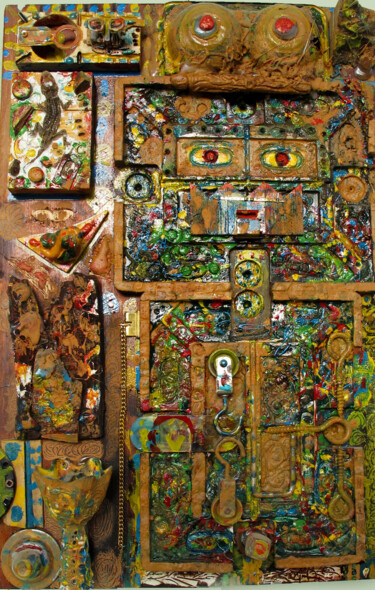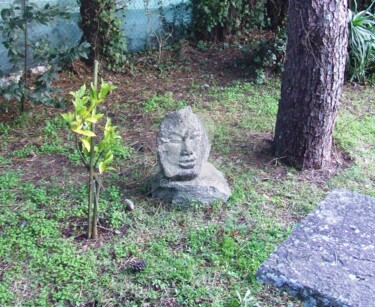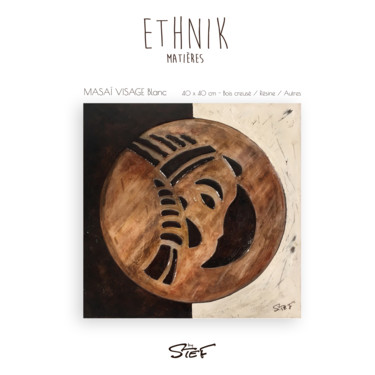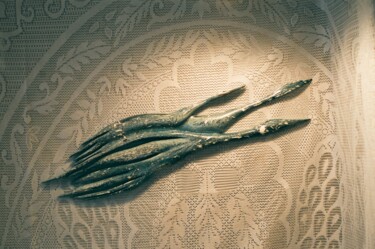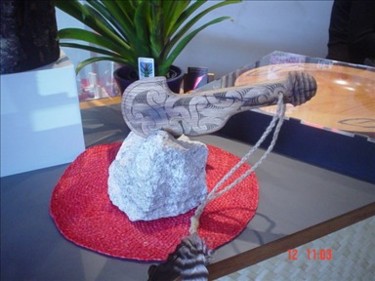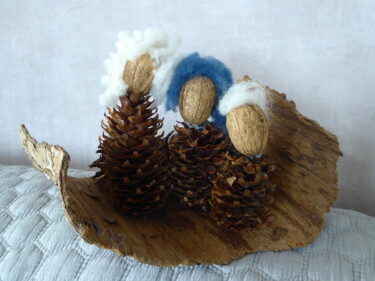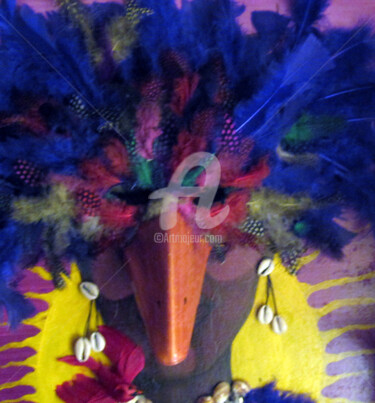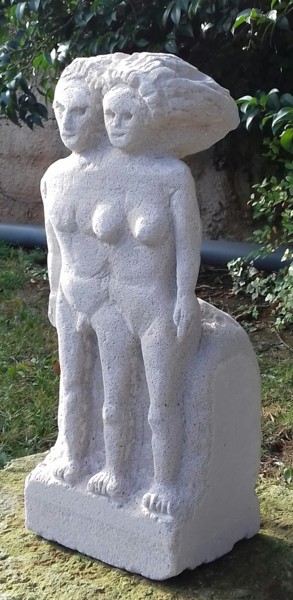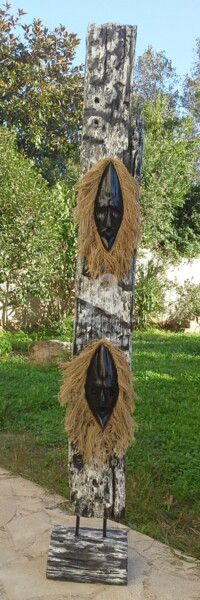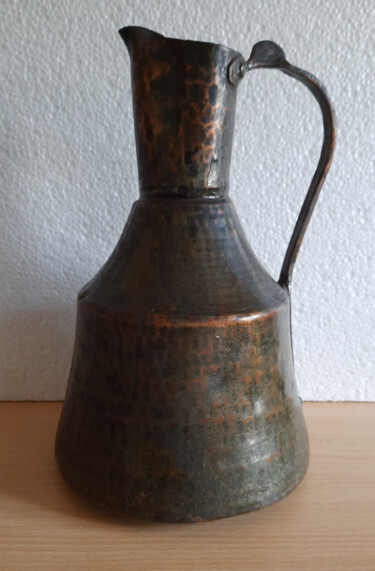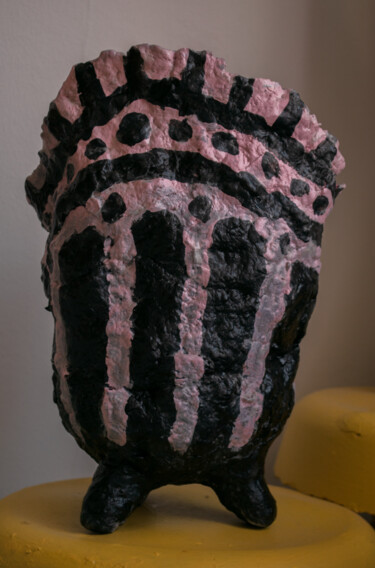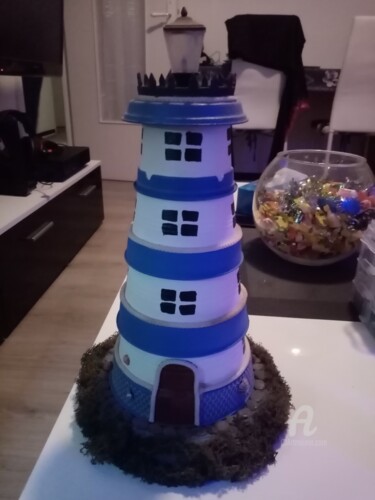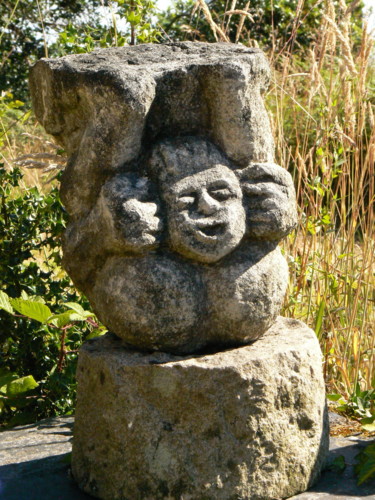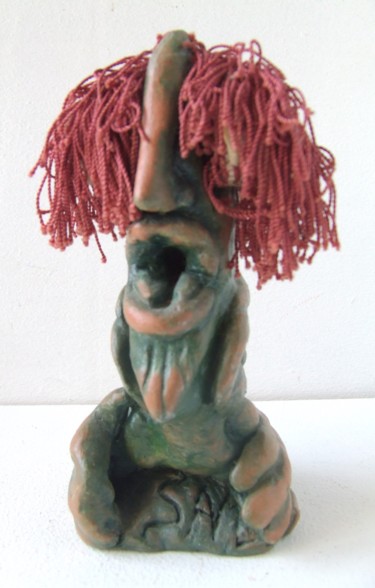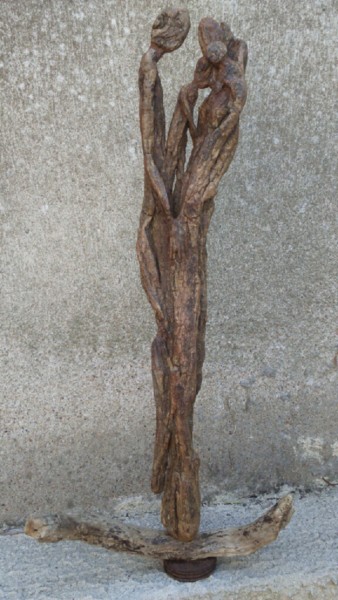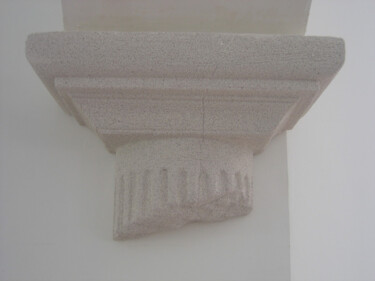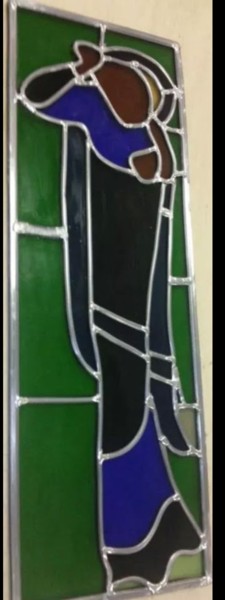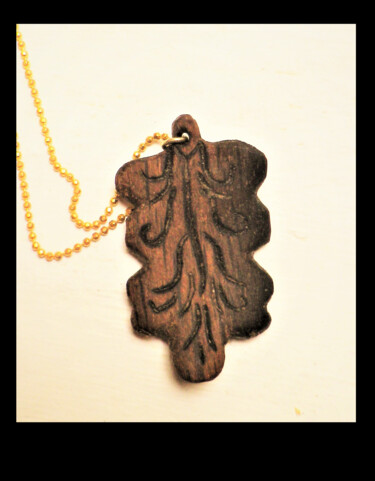
133 Original Contemporary Sculptures For Sale:
How to define Tribal Art style?
The visual arts and material culture of indigenous peoples are referred to as tribal art, sometimes known as non-Western art, ethnographic art, or, more controversially, primitive art. Tribal art typically has a ritualistic or spiritual function. The design and craftsmanship of objects from tribal cultures, typically with rural beginnings, is referred to as tribal art.
In the 19th century, famous Western art professionals did not even consider non-Western art to be art. Instead, these objects were seen as relics and examples of "exotic" or "primitive" societies. But in the latter half of the 20th century, attitudes about tribal arts have shifted. Before postmodernism emerged in the 1960s, art critics saw tribal arts primarily from a formalist standpoint, giving little consideration to the symbolic significance, historical or cultural context, or artist's intention of the piece. Since then, tribal art, such as African art in Western collections, has come to be highly valued by international collectors, exhibitions, and the art market.
The phrase "tribal" could connote a less sophisticated kind of art that is associated with primitivism and suggests a lack of skill, design, intent, or concept. However, as museums reexamine and recurate their holdings in acknowledgment of the reality that tribal art is far from being simple and primitive and frequently has a skill of execution that is far beyond what we expect, it is gaining more and more public interest. Additionally, it has the power to reach our souls. Our inner instincts may be awakened and we connect with their truth as a result of their compelling presence and emotional energy, enhancing our perception of spiritual depth.
Historically, Western anthropologists, private collectors, and museums of ethnography and natural history have collected tribal artwork. In museum collections, tribal art can be divided into three main categories: Art from the Americas and the Oceania, especially that from Australia, Melanesia, New Zealand, and Polynesia; and African art, notably that from Sub-Saharan Africa.
African Tribal Art
Stone carvings, wood carvings (masks and sculptures), jewelry, basketry, textiles, pipes, musical instruments, weaponry, beadwork, and the design of architectural features like doors and wall ornamentation are all examples of African tribal art. The development of these crafts was impacted by the accessibility of tools, resources, and know-how; not all tribes engaged in these artistic endeavors. The most typical material was wood, frequently decorated with clay, paint, shells, beads, ivory, metal, feathers, animal hair, raffia, and on rare occasions even semi-precious stones.
African art was a fundamental part of an all-encompassing religion. The vital forces allegedly present in all living things were represented by specific images that acted as their embodiments or representatives. The essence of tribe ancestry was preserved by these representations of the dead, who frequently spoke for them and gave people a chance to connect with the ancestor spirits. African tribal artifacts were typically created as religious art - for a specific ritual or ceremonial usage - despite the fact that many of the forms used include secular components and some works of art are purely decorative and ornamental.
Initiation into age-groups, such as the young men's or old men's "societies," which each have their own unique symbols and cult motifs, is the basis of many tribal rituals. Such "societies" are known for their abundance of carved figurines and masks, many of which represent patron deities like the God of Thunder or the God of Fire. Although carvings were almost exclusively manufactured as a luxury item by some societies, they were just as ubiquitous and popular as masks and had a ritualistic significance. The Yoruba tribe in Nigeria were skilled round figure carvers and frequently crowned their typically large masks with hordes of very alive dolls, creating the illusion that a party was in progress. Sculptors could achieve a stature and notoriety that was somewhat akin to that of a well-known artist in the West because of the excellent caliber and repute of African sculpture among other tribes, notably the Yoruba.
Oceanic Tribal Art
The Oceania subregion is made up of four distinct ethnogeographic regions: Polynesia, Micronesia, Melanesia, and Australasia. Oceanian tribal art refers to the cultural traditions and creative history of the indigenous people who live in these four areas. This Lapita culture eventually had an impact on the bulk of Polynesia, Micronesia, and Melanesia. Another factor was the Vietnamese Dong-Son civilization, which flourished from around 600 AD and was a significant trader in the western Pacific. Bronze artifacts from this civilization have been found all throughout Oceania.
Although each region and island group had its unique aesthetic traditions that shaped its arts and crafts, oceanic tribal art was linked to pagan events involving the supernatural, spirit-worship, and fertility. A vast variety of art forms, including body painting, tattooing, painting, sculpting, wood carving, and textile art, were produced, with the majority of the materials utilized by artists and craftsmen being perishable. As a result, only a small number of examples - excluding stone buildings and sculpture - have persisted.
The monumental stone sculptures (moai) on Rapa Nui/Easter Island and the Marquesas, exemplifying the use of designs incorporating anthropomorphic figures with protruding tongues and bulging eyes, common to many eastern and remote areas of Polynesia, are among the famous examples of Polynesian art that have survived. Other examples include highly ornamented bark cloth in western Polynesia.
Because they were used in complicated pagan rites and cult practices throughout Melanesia, masks were a key motif in indigenous art. Micronesian tribal relics also include carved wooden bowls, painted boats, and stylized wooden masks in addition to body painting and tattooing. Body painting, rock painting, bark painting, rock engravings, standing stones, carving, sculpture, and ornamental adornments on tools and weapons are only a few examples of the numerous styles and media used in Australian Aboriginal art.
American Tribal Art
American Indian art has been profoundly impacted by both the nomadic, hunter-style lifestyle of the former and the little more static but nonetheless impoverished environment of the later. Another significant aspect in the emergence of regionally distinct creative traditions was the accessibility of resources including wood, wicker, metal, animal bone, clay, and cotton.
Southwest tribes were experts at weaving, making ceramics, and creating frescoes. These tribes included the Zuni, Navaho, and Hopi peoples as well as the Hohokam of southern Arizona, the Ansazi of northern Arizona and New Mexico, the Mimbres of south-west New Mexico, and the Ansazi. Native Americans from the Southwest invented sandpainting, often known as dry painting (notably the Navajo).
In the Midwest, tribes were solely responsible for shaping culture. These tribes were recognized for their intricate textile art as well as their well-known earthworks, or "effigy mounds," which were built to resemble different animals. Tribal art also comprised sculptured stone pipes with patterns ranging from the extremely realistic to the abstract, in addition to carved wood bowls and polished stone and copper ornaments.
The South-East region also produced pipes shaped like birds and animals, finely carved shells, and elaborately painted clothing accessories. In spite of using subpar clay, it was renowned for producing exquisite pottery. Pottery pieces were created and adorned in a variety of floral and geometric patterns for ceremonial, religious, and private uses.
Native American basketry was a prominent kind of art on the West Coast, particularly in California. The Iroquois tribe of the Northeastern Indians, in particular, were known for their woven wampum belts, porcupine quillwork, and False Face Society masks. The best tribal art produced in the Northwest was sculpture, particularly wood carving. Totems, little wooden figurines, and masks that were painstakingly painted and frequently inlaid with stones and abalone shells were among the most popular styles of hand-carved sculpture.
How Tribal Art influenced Modern Art
By the middle of the 19th century, as more expeditions brought back tribal artifacts, interest in what was then known as primitivism/primitive art - typically the art of black Africa - began to grow. Significant tribal art exhibitions from the late 19th and early 20th centuries also exposed non-Western art to the Western art community. Important exhibitions, such the 1941 American Indian Art and the 1935 African Negro Art, were held at the Museum of Modern Art.
Artists discovered a model for an alternative to Western art in statues of tribal gods and ritual masks, whose non-naturalistic, highly stylized forms also incorporated powerful, highly emotive imagery. Tribal art had a significant influence on famous artists like Vincent Van Gogh and Henri Matisse, Paul Gauguin and Pablo Picasso. The most striking early effect was Cubism, which, by fragmenting the picture and giving up perspective, quickly weakened the Western paradigm by drawing primarily on the formal implications of tribal art. Abstract art was one of the main results of this.
The German group Die Brücke began focusing more on the primitive, instinctive, and ritualistic elements of non-Western art around the same period, establishing the major modern art movement known as Expressionism. The Dadaists furthered the breakdown of the Western paradigm by drawing inspiration from tribal art, Cubism, and Expressionism in Zürich, New York, and finally Paris. Dada's pictorial or sculptural work was mostly composed of collage and assemblage, its three-dimensional counterpart. The fact that art may be created out of anything and doesn't have to be painted, carved, or modeled was established by this work composed of found materials. Its imagery frequently incorporated aspects from tribal art and was confrontational on a political, social, or aesthetic level. Dada presented the concepts that eventually led to conceptual art, whose impact mixed with those of the other streams of modern art to create the vast, broad, enormously rich, varied, and globally diverse river of contemporary art that the world currently enjoys.
Discover contemporary Tribal Art Sculptures on Artmajeur
Contemporary Tribal Art Sculptures are a form of original artwork that merge the traditional techniques of tribal art with modern materials and concepts. These sculptures are usually made of natural materials such as wood, stone, and clay, but also incorporate synthetic materials like metal and plastic. The supports used for these sculptures can vary, from pedestals to wall mounts, and even outdoor installations. What is unique about these sculptures is their ability to convey the cultural and spiritual significance of tribal art while making a statement about contemporary society. The artists behind these sculptures use their creativity and skill to create pieces that are not only beautiful but also thought-provoking. The use of traditional techniques and materials in combination with modern themes has resulted in a style of art that is truly one-of-a-kind.

©2021 Nicolas Bouriot (KRB1)
Origins and History
Contemporary Tribal Art Sculptures have their origin in the traditional sculptures produced by indigenous communities around the world. These sculptures were created for various purposes, from religious rituals to everyday use. The history of Tribal Art Sculptures can be traced back to prehistoric times, but it was during the colonial period that these sculptures gained attention from the Western world. This was due to their exotic and "primitive" appearance, which was highly valued by collectors and museums. In the 20th century, artists such as Picasso and Matisse were inspired by Tribal Art Sculptures, and incorporated their aesthetics into their own works.
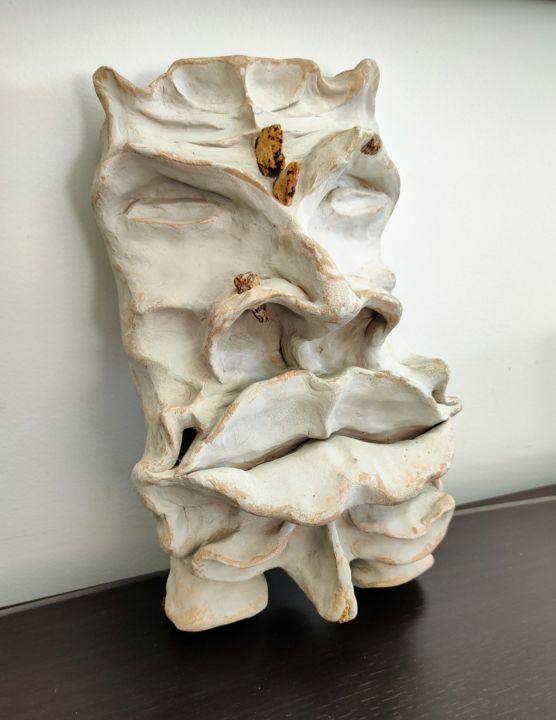
©2007 Arnaud Gabriel Manette
Evolutions of theses works in the contemporary art market
Contemporary Tribal Art Sculptures have evolved significantly in recent years, incorporating modern techniques and materials while still maintaining their traditional roots. These sculptures have become increasingly popular in the contemporary art market, with collectors and enthusiasts seeking out unique and authentic pieces.
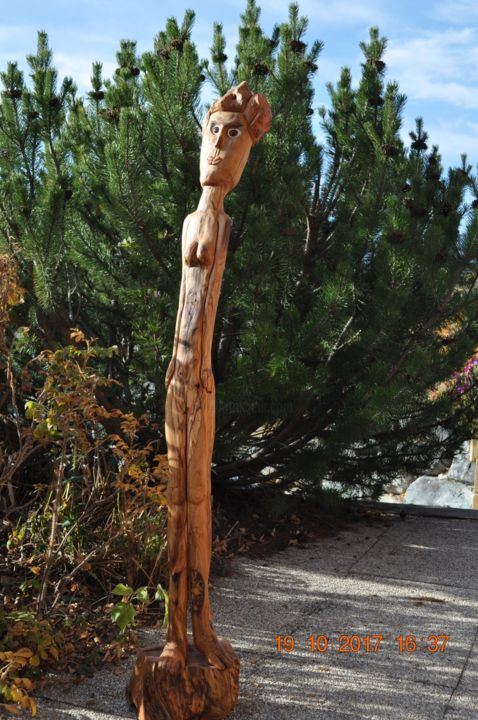
©2018 Marc Poget
Related Famous Artists
Contemporary Artists who have gained recognition for their work in contemporary Tribal Art Sculptures include Kiki Smith, Nick Cave, and Nnenna Okore. Kiki Smith is known for her sculptures that explore the human body and its relationship to nature, often incorporating natural materials like bronze and glass. Nick Cave’s work centers on creating wearable sculptures that blend elements of fashion and performance art. Nnenna Okore uses materials like burlap and paper to create large-scale sculptural installations that draw inspiration from her Nigerian heritage. These artists have contributed to the ongoing conversation about the intersection of contemporary art and traditional tribal art forms, exploring themes of identity, culture, and history through their work. The popularity of contemporary Tribal Art Sculptures has led to increased interest in the cultural significance and history of indigenous art forms, as well as a deeper appreciation for the skill and creativity of contemporary artists working in this field.
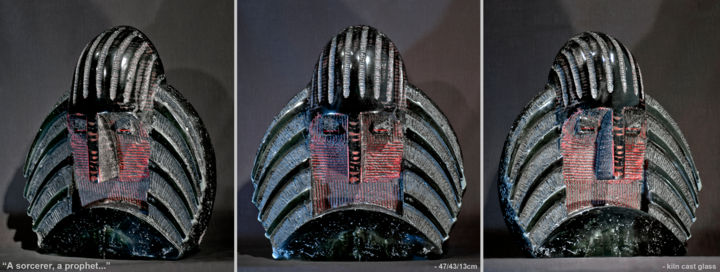
©2020 Lachezar Dochev
Notable contemporary Tribal Art Sculptures
Contemporary Tribal Art Sculptures have gained popularity in recent years, showcasing the beauty and intricate designs of indigenous cultures. Here are some well-known Artworks and their descriptions:
"Ngati Pumau" by George Nuku, created in 2013, is a stunning sculpture made of fluorescent acrylic, wood, and shell. The artwork represents the Maori culture’s ancestral waka (canoe), which symbolizes their journey and connection to the sea.
"Spiral Jetty" by Robert Smithson, created in 1970, is a land art sculpture located in the Great Salt Lake, Utah. The artwork’s large spiral shape is made of rocks and earth, creating a striking contrast against the lake’s bright pink water.
"Nkisi Nkondi" by an unknown artist, created in the late 19th century, is a powerful sculpture from the Kongo culture. The artwork features a wooden figure with nails driven into its body, representing the spiritual power and protection of the nkisi (spirit).
"The Messenger" by Michael Nicoll Yahgulanaas, created in 2010, is a contemporary Haida art sculpture made of stainless steel and painted aluminum. The artwork depicts a fusion of ancient Haida and Asian art styles, showcasing the artist’s cultural heritage and contemporary vision.
"The Dreamers" by Brian Jungen, created in 2018, is a series of sculptures made from Nike Air Jordan sneakers. The artwork represents the artist’s First Nations heritage and critiques the commodification of indigenous culture.
Overall, these contemporary tribal art sculptures showcase the diversity and richness of indigenous cultures, highlighting their significance in today’s art world.


Lachezar Dochev
Sculpture - Glass | 16.9x18.5 in
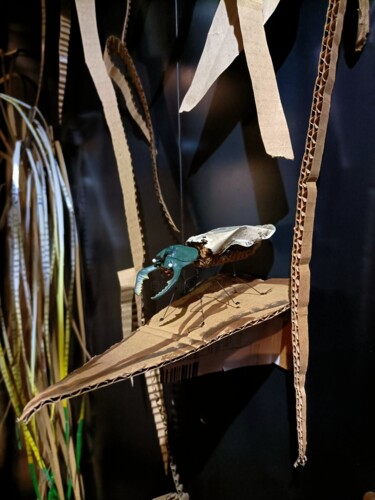
Zampo
Sculpture - Wire | 7.9x7.9 in
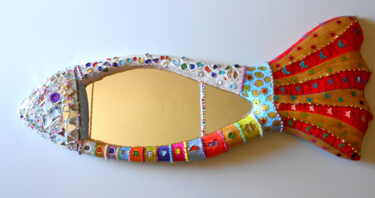
Odile Maffone
Mosaic | 37.8x15.8 in
